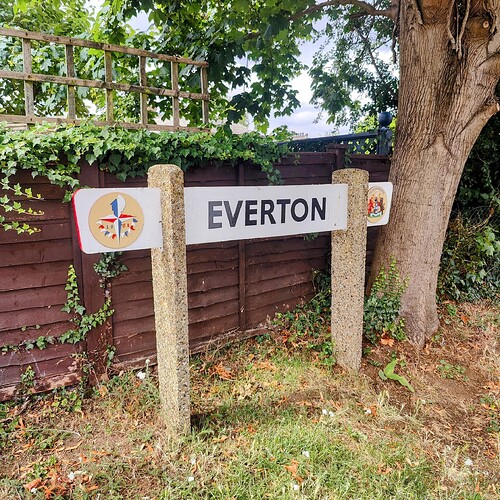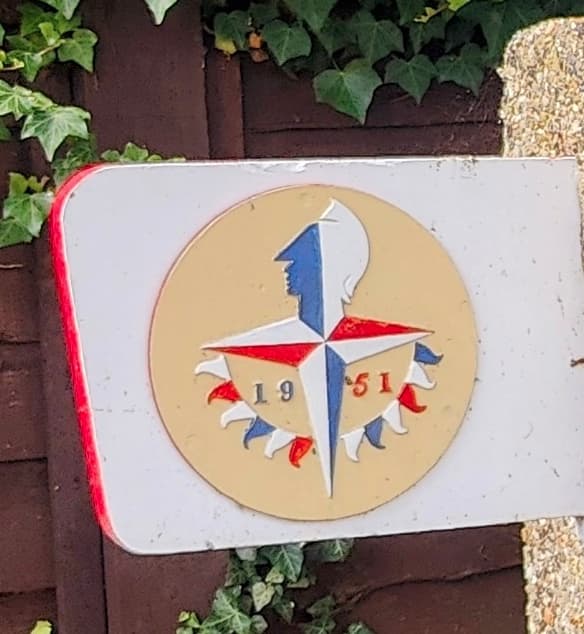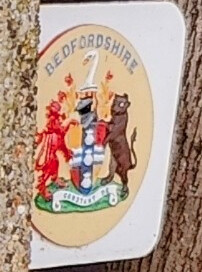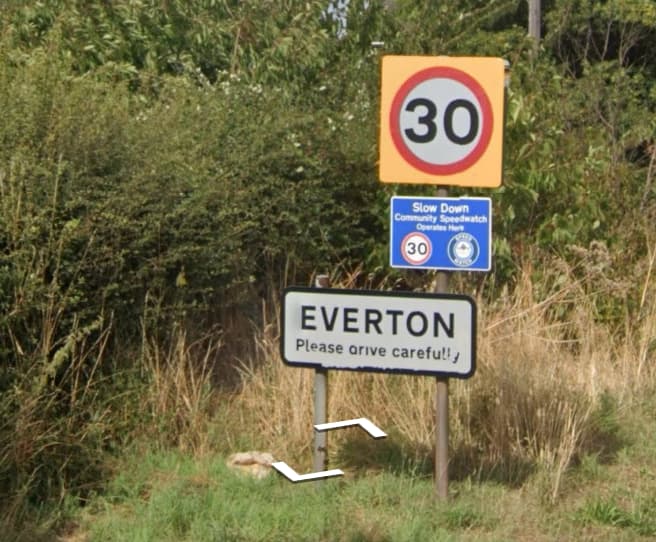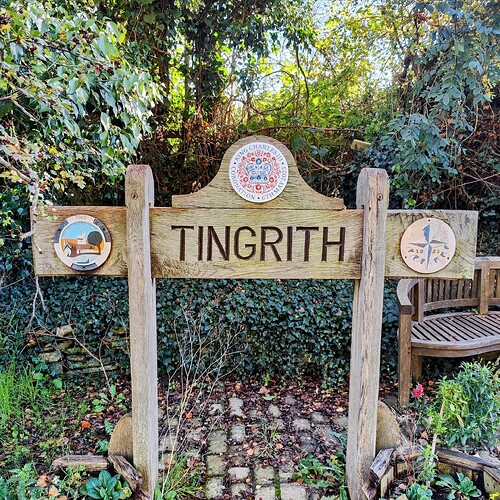These two signs were rejected initially because “The submission lacks uniqueness or historical and cultural meaning” and then were rejected on appeal because “it is a normal sign board”. But they are not.
Festival of Britain Sign, Everton
The Thornton Arms, Everton, Sandy SG19 2JY, UK
Originally installed in 1951 to celebrate the Festival of Britain, these signs are unique to Bedfordshire villages. This sign was refurbished at the turn of the millennium and still bears the original crests of the Festival and the Coat of Arms of Bedfordshire
NOT TEMPORARY OR GENERIC, HISTORICALLY INTERESTING. The Festival sign and crest of Bedfordshire are visible on either side. Unique to Bedfordshire villages, these are historically significant. Visible on StreetView. See also: https://www.thehistorypress.co.uk/articles/the-festival-of-britain-1951/ Lockdown cyclist covers 1,000 miles to catalogue county's remaining Festival of Britain signs - Bedford Independent
Out of the pair of rejected, this one is in better condition. Although obviously it has the village name on it, it’s not a boundary marker.
This is the key part of the image, the crest of the 1951 Festival of Britain
The Festival of Britain was a big deal in 1951 - see Festival of Britain - Wikipedia - it echoes the Great Exhibition of 1951 and is similar to the New York World’s Fair and other events. Events were held around the country, and Bedfordshire County Council went in to celebrate it at the same time. 1951 also saw the introduction of the official crest of the county (see CIVIC HERALDRY OF ENGLAND AND WALES - BEDFORDSHIRE (1974 to 2009) ), this can be seen on the other side.
There’s typically one per village (sometimes zero, in rare cases two) and they are completely unique to villages in the area. They are usually located somewhere near the center of the village and are not boundary signs. These signs are in addition to the other much later village decorative signs that are now typical of British villages.
These signs were originally erected in 1951, at the turn of the millennium there was a project to refurbish them and replace the missing signs. This one retains the original 1951 crests. Some have been refurbished since, occasionally modified with additional or different crests (for example the Coronation of Charles III). They are very much permanent, having been around for nearly 75 years, and also I believe they are very distinct as they cover a particular slice of British post-war history.
Most of the signs in other villages are wayspots, this one is frustrating because it’s in really good condition. In my view this is clearly permanent and distinct, and historically and culturally interesting.
Festival of Britain Sign, Sundon
25 Streatley Rd, Sundon, Luton LU3 3PQ, UK
Originally installed in 1951 to celebrate the Festival of Britain, these signs are unique to Bedfordshire villages and bear both the crest of the Festival and the Coat of Arms of Bedfordshire plus the Best Kept Village award for 1968 to 1970. This one was refurbished at the turn of the millennium, and although the crests have faded you can still see them clearly.
This one is a turn-of-the-century reproduction of the original. These had vinyl crests which have faded but are still readable. It’s located on a small village green (you can see a bench in the background). Despite the condition, it’s the same thing as all the others and I believe is permanent, distinct and historically and culturally significant.
Can these both be looked at again, because I think that they are eligible and have been mistaken for normal village boundary signs, which they are not.
ADDED: for comparison, this is what the boundary name signs tend to look like in these villages.
